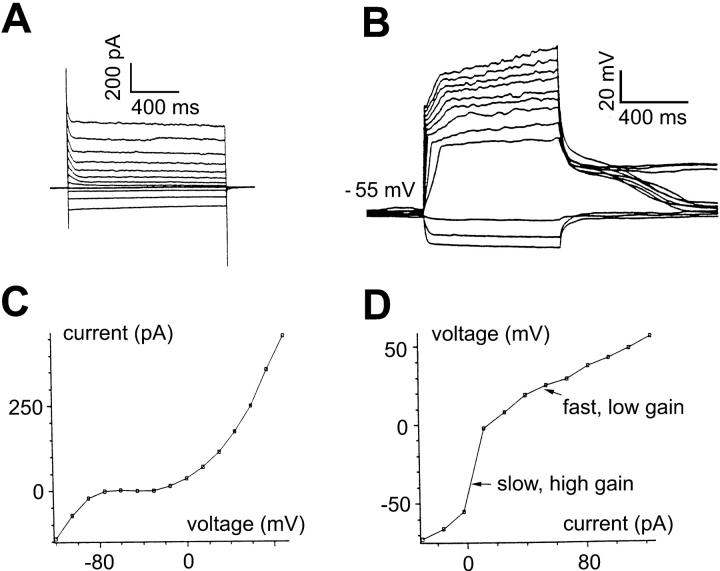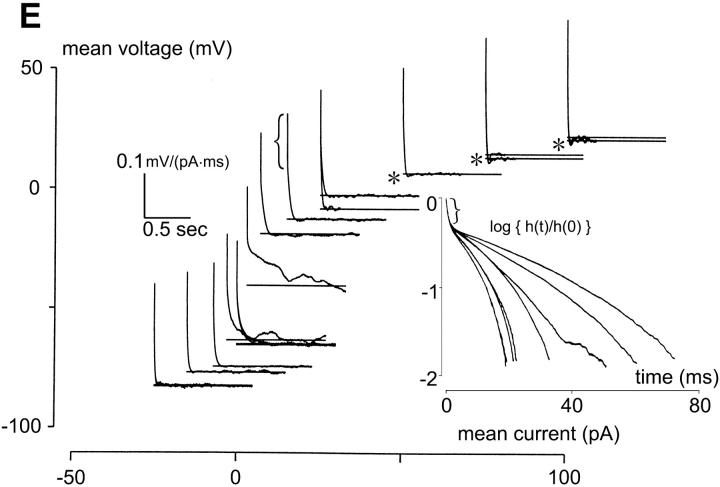FIGURE 1.
Membrane currents and intrinsic dynamics of bipolar cell. All recordings in solution A. (A) Current responses of a bipolar cell to voltage-clamp pulses ranging from −120 to 90 mV, in 15-mV increments. An outward current was activated at membrane voltages >−30 mV and a prominent hyperpolarization-activated, inwardly rectifying current at membrane voltages <−50 mV. (B) Voltage responses of the bipolar cell to current-clamp pulses ranging from −30 to 124 pA, in 14-pA increments. (C) Current-voltage relationship obtained from the current responses at the end of each of the voltage-clamp pulses shown in A. (D) Voltage-current relationship obtained from the voltage responses at the end of each of the current-clamp pulses shown in panel B. Note both outward and inward rectifications. (E) Effective impulse responses obtained by the m-sequence method and plotted in the (I,V) plane (as described in Methods). For depolarizing mean currents, the impulse response is rapidly attenuated, and also contains undershoots (asterisks). Consistent with the presence of the hyperpolarization-activated current in panel A, for hyperpolarizing mean currents (−7 pA, −15 pA, −25 pA), membrane voltage shows inward rectification as evidenced by an attentuation of the impulse response. Impulse responses are also speeded up, due to the inwardly rectifying current, but there is no undershoot. (E, inset) Semilogarithmic plots of the impulse responses for depolarizing mean currents (15 pA, 25 pA, 50 pA, 75 pA, and 100 pA). The faster impulse response curves correspond to the more depolarizing mean currents. All impulse responses are convex, indicating that their declining phase is faster than that of exponential decline (which would be a straight line). The initial segments of all impulse responses reflect the series resistance of the recording pipette (indicated by brackets).


